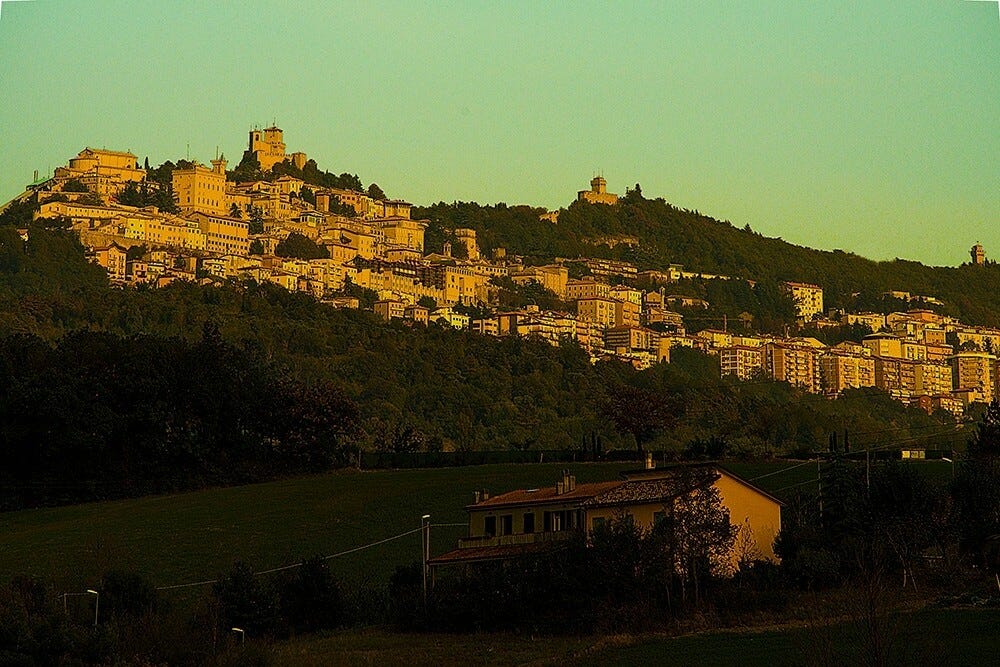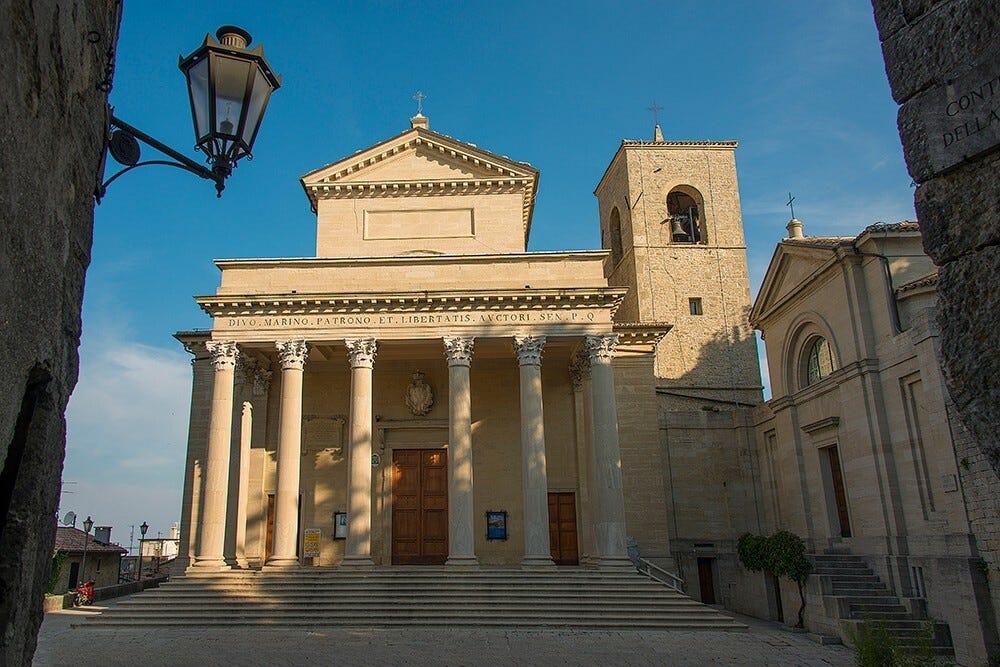San Marino’s Place on the UNESCO World Heritage List
How a medieval mountaintop republic earned one of the world’s highest cultural honours
Not a promo!
UNESCO is the “cultural” arm of the United Nations. It aims to build peace through international cooperation in education, science, the arts, and culture.
But this is definitely not a promotional advert for UNESCO.
If I’m honest, I’m not entirely sure what they do day-to-day. I assume it’s important;
and I would absolutely not be the one to argue with Trump, who famously pulled the United States out of UNESCO.
What I do know is this: being a UNESCO World Heritage Site is excellent for tourism - and not exactly an easy badge to earn!
And guess which country has its historic centre and mountain on the list?
You already know. But I’ll say it anyway: San Marino.
What’s on the list
Since 7 July 2008, the Historic Centre of San Marino and Mount Titano have been officially recognised as UNESCO World Heritage Sites.
The designation covers 55 hectares, including:
Mount Titano itself
The medieval walled old town with its three fortification towers
Gates, bastions, and defensive walls
The Palazzo Pubblico (19th century)
The Basilica of San Marino (neo-classical, 19th century)
14th–16th century convents
The 18th century Titano Theatre
What makes it special? UNESCO calls it “an exceptional testimony to a representative democracy based on civic autonomy and self-governance, with an uninterrupted continuity as the capital of an independent republic since the 13th century.”
A Republic older than most countries
San Marino is one of the world’s oldest republics, and the only surviving Italian city-state.
Its historic centre is not a fossilised monument: it’s still inhabited and still performs all the institutional roles of a capital. Thanks to its perch on Mount Titano, the city escaped the heavy urban transformations that swept much of Europe from the Industrial Revolution onwards.
And that’s part of the charm: a living medieval capital that still governs itself much as it did centuries ago.
History in stone
Human presence here goes way back, with archaeological remains dating to the third millennium BC. But the San Marino we know begins with Marinus, a stonemason from Dalmatia, who arrived in 301 AD and founded a small community on Mount Titano.
Over the centuries, San Marino:
Freed itself from the control of bishops and popes
Expanded its territory (final borders set in 1463)
Avoided being absorbed into the Papal States
Fended off a brief papal occupation in 1739
That resilience is written into the walls, towers, and narrow streets you see today.
Why UNESCO said “yes”
Outstanding Universal Value (their words, not mine):
Criterion (iii): A unique, uninterrupted example of a free republic since the Middle Ages
A model of democratic governance that influenced Europe
High authenticity in location, setting, and use
Strong visual identity - from the Three Towers to the panoramic views from Piazza della Libertà
UNESCO also highlighted the 19th–20th century restoration works by architect Gino Zani, whose “medievalisation” style aimed to create an idealised historic image, now part of the city’s own layered history.
Bonus UNESCO recognition
In April 2025, San Marino achieved another UNESCO milestone:
The manuscript Vita Sanctorum Marini et Leonis was added to the Memory of the World Register.
This medieval text - presented jointly by San Marino, Italy, and Croatia - tells the life of Saint Marinus, the republic’s founder, strengthening cultural ties between the three nations.
It’s the second UNESCO recognition for San Marino, after the 2008 World Heritage inscription.
Why it matters for visitors
Being a UNESCO site isn’t just a badge of honour - it’s a tourism magnet.
It guarantees that the historic heart of San Marino will be preserved, protected, and promoted internationally.
For you, the visitor, it means:
Walking streets largely unchanged since medieval times
Exploring towers, bastions, and theatres still in use
Experiencing one of the world’s oldest functioning republics - without the crowds you’d find in larger European capitals
Final thought
UNESCO recognition might not change the daily life of Sammarinese people all that much, but it cements something we already knew:
San Marino isn’t just a curiosity… it’s a living piece of world heritage!







